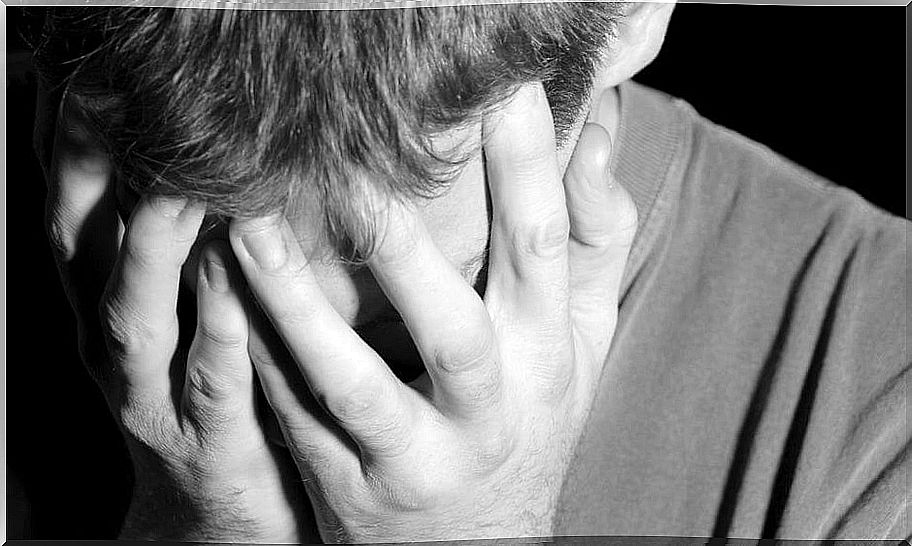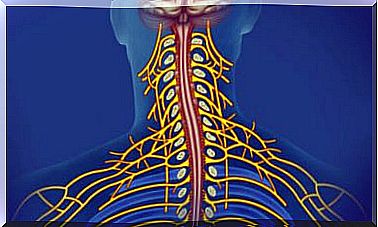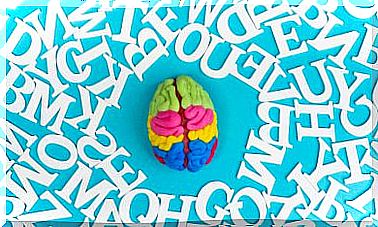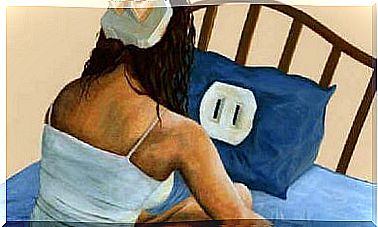Paratymy: Definition, Symptoms And Associated Disorders

Does the term parathymia sound familiar to you ? It is a disorder of affectivity characterized by an inadequacy or incongruity between the affects and emotions and the context. It also encompasses the situations or manifestations in which the emotional expression is incompatible (or incongruous) with the patient’s verbal expression.
Through this article, we will know a little more about this disorder, its characteristics, examples, differences with other affective disorders and disorders in which it appears more frequently. In addition, we will explain what the psychopathology of affectivity consists of. Do not miss it!
The psychopathology of affectivity

Parathymia is an affective disorder that we will explain in detail a little later. Before we are going to define what is the psychopathology of affectivity.
It is a very specific area of psychology that deals with studying and describing disorders or alterations of affectivity, that is, everything that would be far from “normal” in terms of affects, feelings and emotions.
For its part, affectivity can be defined as the set of states and tendencies that a person experiences in his own and immediate way. It encompasses all those experiences that define and limit the emotional life of the person, and transcends personality and behavior.
As we can see, it is a phenomenon of a subjective and idiosyncratic nature. But what about parathymia?
Paratymy: what is it?
Parathymia is an affective disorder characterized by the inadequacy of emotional expression in the context (or situation) in which the person is. In other words: in parathymia, the affect that is shown externally is incongruous with the context or environment in which it occurs.
We also speak of parathymia when the person’s mimic expression does not correspond to the feeling that he expresses outwardly (for example, when someone tells us that he is suffering a lot while smiling). Parathymia has received other names, such as inappropriate affect or affective inadequacy.
A very illustrative example of parathymia would be laughing out loud at a funeral, or crying with sadness when they tell us good news. On the other hand, a person suffering from parathymia will tend to manifest reactions that will not correspond naturally to the content of their experiences.
The inadequacy of parathymia
As we have seen, in parathymia there is an inappropriateness, either between emotional expression (for example crying) and context (at a party), or between emotional and gestural expression (laughing) and what the patient verbalizes (if says he feels very sad).
Furthermore, said inadequacy can refer both to the meaning and to the intensity of the affective component that accompanies the experience (that is, when this intensity is excessive or lower than what is “expected”).
What disorders is parathymia associated with?
Although it is true that a person can suffer from parathymia in isolation (that is, without having another underlying mental disorder), this affective disorder is observed above all in some mental or medical disorders. In which ones?
Schizophrenia
The Swiss psychiatrist Eugen Bleuler (1857 – 1939) included parathymia as one of the fundamental symptoms of schizophrenia.
The other symptoms that he considered fundamental in this disorder were the relaxation of thought associations (incoherence), the alteration of the subjective experience of the personality (depersonalization), autism and affective, intellectual or will ambivalence.
In addition, parathymia occurs especially in cases of schizophrenia with negative symptoms. According to Dr. Tomás Rodelgo, when parathymia manifests itself in people with schizophrenia, they can behave in a “silly” way or with a particular childlike joy.
Manic-depressive psychosis
Another disorder in which parathymia usually appears is manic-depressive psychosis . The term was created by Emile Kraepelin, who included it in the 6th edition of his book entitled Psychiatry (1896), and it consists of a disorder of the psychotic spectrum in which psychotic episodes appear that occur with depressive and manic manifestations.
Its course is not deteriorating (unlike the course of schizophrenia). At present, the term is obsolete and the term “bipolar disorder” is used.
The organic-cerebral syndromes
In organic-cerebral syndromes, parathymia can also (and usually) appear. This term refers to the alteration of mental function due to a non-psychiatric illness. Its most frequent causes are intoxication or overdose of any substance (drugs), dementias, infections, etc.
Depression or mania

Although it is much less common, parathymia can also appear in depressive or manic disorders. To this affectivity disorder would be added multiple other symptoms in both cases.
In the case of depression, we find other associated symptoms beyond parathymia (which is much less typical), such as: deep sadness, guilt, fatigue, insomnia (or hypersomnia), lack or excess appetite, etc.
And in the case of mania (manic episode), we find for example: flight of ideas, distraction, decreased need for sleep, verbal language, psychomotor agitation, etc.
Differences with other affective disorders
We must not confuse parathymia with other affective disorders. We have collected only the ones that could cause the most confusion:
- Emotional lability : in this case, there are sudden changes in affect, and there is no control of emotions.
- Affective ambivalence : opposite emotions are experienced simultaneously about the same object or situation.
- Affective rigidity : here there is a loss of the ability to regulate and adapt emotions to the context.
- Neothymia : this disorder involves the appearance of a new feeling, difficult to recognize because it has never been experienced before.
Parathymia is a disorder that can ideally be treated from a multidisciplinary perspective (including psychiatry and psychology).
Knowing its causes, the factors that maintain it and its impact on the patient’s life, will be key elements to treat it and improve the well-being of the person. As always, their global reality and the context in which said affective alteration appears should be known.









